LittleDot Cu KIS IEM Review

My Video Review:
When I’m saying LittleDot out loud, I’m thinking about tube-based headphone and loudspeaker amplifiers the most, then about solid-state amplifiers of all kinds and then about digital sources. If you would tell me that LittleDot would start producing portable In-Ear-Monitors a few years ago, I wouldn’t believe you. As all things in life, it’s good to broaden your view from time to time and since LittleDot went so deep into the rabbit hole with personal audio, it was only a matter of time when they’ll start developing their own headphones, be them portable or not. It is a bit weird seeing IEMs releasing first, but I would go with a wild guess that some desktop headphones are being developed right now as I am typing this. There is a reason on their official web-store under the Shop category, the last sub-menu is labeled Headphones & IEMs right? LittleDot is known for their desktop gear the most and naturally some desktop headphones would make a lot of sense, but that is probably a story for another time, a year from now? That’s a strong possibility.
Today my friends, I will be focusing on their flagship IEMs called Kis that is part of a bigger brotherhood under the CU prefix. As of right now, Little Dot is having 4 distinct IEMs: their entry level Rad, followed by Wyn, by Cen and then by their flagship Kis that is selling for $729.99
Price wise, Kis entered a den of wolves as there are plenty of good sounding IEMs up to 1 kilo-buck price category. Does Kis stand a chance versus established manufacturers in the IEM world? Let’s find out together.
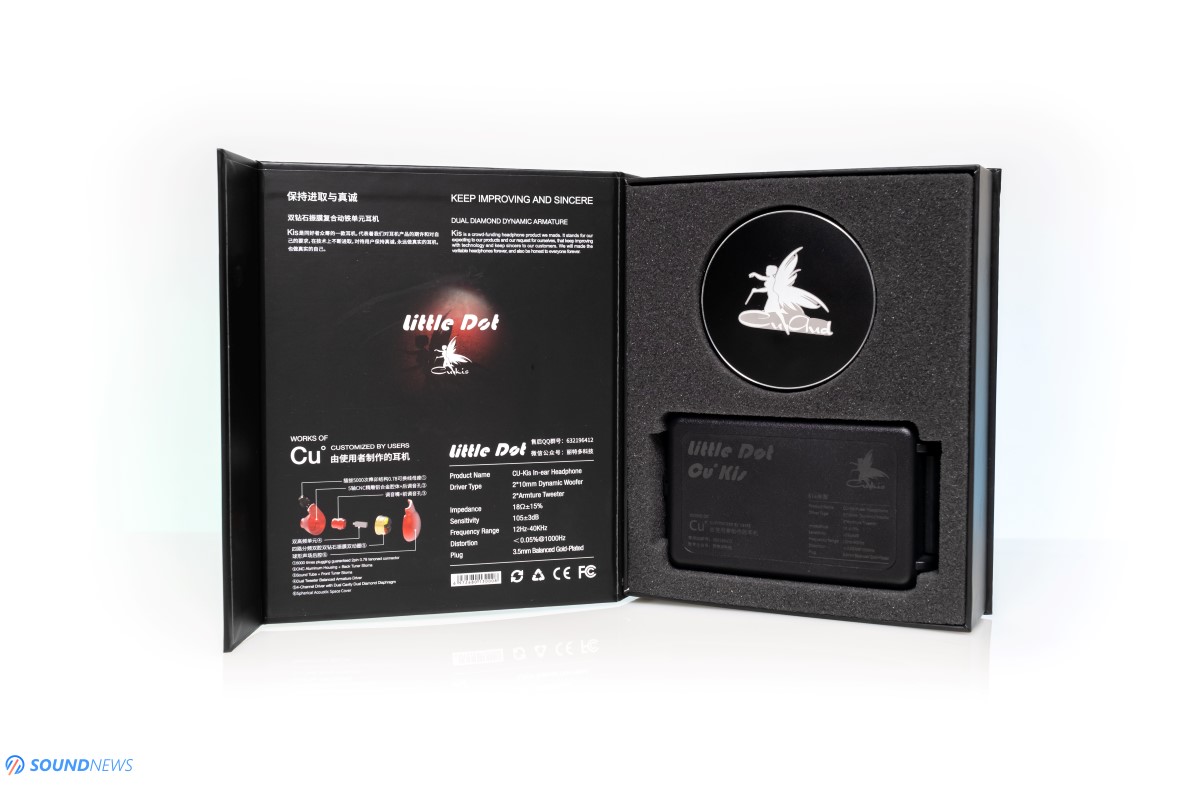
Unboxing a Little Dot, receiving a Kis
Kis are coming double boxed as all flagship IEMs are coming nowadays, the product box is surprisingly thick. The packaging opens like a story book, where on the left you’ll have everything about them, their specifications, the story behind it and their exploded view explaining every component and how it works. On the right you’ll see two cases, the rounded one will be holing the IEMs themselves which mind you is really well-made and padded with a soft material. The other rectangular case will be holding all its accessories. Both cases are surrounded by lots of foam as an extra protection measure. You’ll find everything you need in there to start your listening session. I personally like that there isn’t a user manual as everything is very clear from the start.

Package Contents
The rounded case will be holding the IEMs themselves and a sturdy detachable cable. This is a fully balanced cable terminated with a balanced 3.5mm jack that isn’t that popular in the West, but it’s extremely well-spread in the East. An adapter to a single-ended 3.5mm jack is attached to that cable.
Kis is also coming with a Gift bag that is housing two additional headphone adapters, a 2.5mm balanced and a 4.4mm balanced one. With just a single cable and 3 different adapters, LittleDot killed 4 rabbits with a single shot, they covered all your 3.5mm SE and BAL, 2.5mm BAL and 4.4 mm BAL needs and that’s some clever thinking!
The rectangular accessory box will be holding a cable clipper and two smaller bags with several detachable ear-tips. You will find 3 pairs of regular black silicone ear-tips you’ll normally find with most IEMs nowadays and another 3 pairs of memory foam ear-tips coming in 3 sizes. The Gift box I’ve mentioned before, holds additional 3 pairs of black silicone tips and another 3 Spin-Fit like ear-tips with colored sound tubes. I strongly recommend the Spin-Fit or my personal favorite, memory foam ones. Since they will take the shape of your ear-canal, they will provide a nicer comfort, a better seal and will provide by far the best bass performance.

Design & Build Quality
The IEM body is carefully carved on a CNC machine from a small block of aluminum. The body itself is small and it is hard to believe that four drivers are sitting somewhere inside. It has a somewhat longer sound tube and headphone nozzle, meaning that no matter how deep you’ll insert them, they will never touch your checks, hugely improving the comfort levels. Kis is a very lightweight IEM, even if its body is carved out of metal. I personally find them comfortable long term if I’m using the smallest ear-tips (that’s my size). The diameter of the nozzle is exactly the same I’ve seen in most IEM designs, it’s somewhere around 5 mm and if you already have a bigger ear-tip collection as I do, ranging from Spin-Fit, Comply and other higher-class ear-tips, then you should know that those will fit perfectly on Kis.
Kis are obviously using a detachable cable, it’s very flexible, doesn’t have any microphonics and seems to be well made. LittleDot went with 2-pin connectors instead of MMCX ones. On the plus side, these will resist long term quite a lot better, on the flip side you can’t rotate the cable once you inserted them down deep. Not a biggie, 2-pin connectors are still very popular and you can find lots of third-party cables with this configuration, just in case the stock one goes south.
If you look closely at them, there are two small holes in their body that will move the air pressure outside, improving the comfort even more – that’s a really nice touch.

Tech Inside them
Now this is where it gets super interesting. I’ve tested a decent amount of hybrid IEMs and all of them had a single dynamic driver dealing with the low-end and one or multiple balanced-armature drivers that would be dealing with the midrange and treble duties.
Kis is a hybrid IEM, but a different one since it uses two 10 mm dynamic drivers and two balanced armatures. We all know that a bigger dynamic driver, would deliver a much nicer the bass performance quantity and quality wise. But two dynamic drivers in an IEM? That’s something new and I’m already preparing a nice bass-heavy playlist.
Its name KIS comes from LittleDot’s main principle: Keep Improving and Sincere and as their principle states, they’ve went over several iterations until it sounded the way they wanted. In the end, it took them 14 rounds of beta listening meetings, 160 testers would listen to their iterations every single time and 86 versions were developed until they’ve seen the light at the end of the tunnel.
Since this is a flagship IEM, using some boring cellulose drivers was out of discussion, LittleDot used an ADLC or Amorphous Diamond-Like Carbon diaphragm in these, plus two custom balanced armatures that will be dealing with the high and ultra-high frequencies. Quite an interesting design philosophy if you ask me and I’m quite curious how they will sound.
Their impedance sits at 18 Ohms and their super-high sensitivity of 105 dB per 1mW of power will put little to no pressure on your digital source and amplifier. Just make sure to use a clean sounding headphone jack and you’re all set!
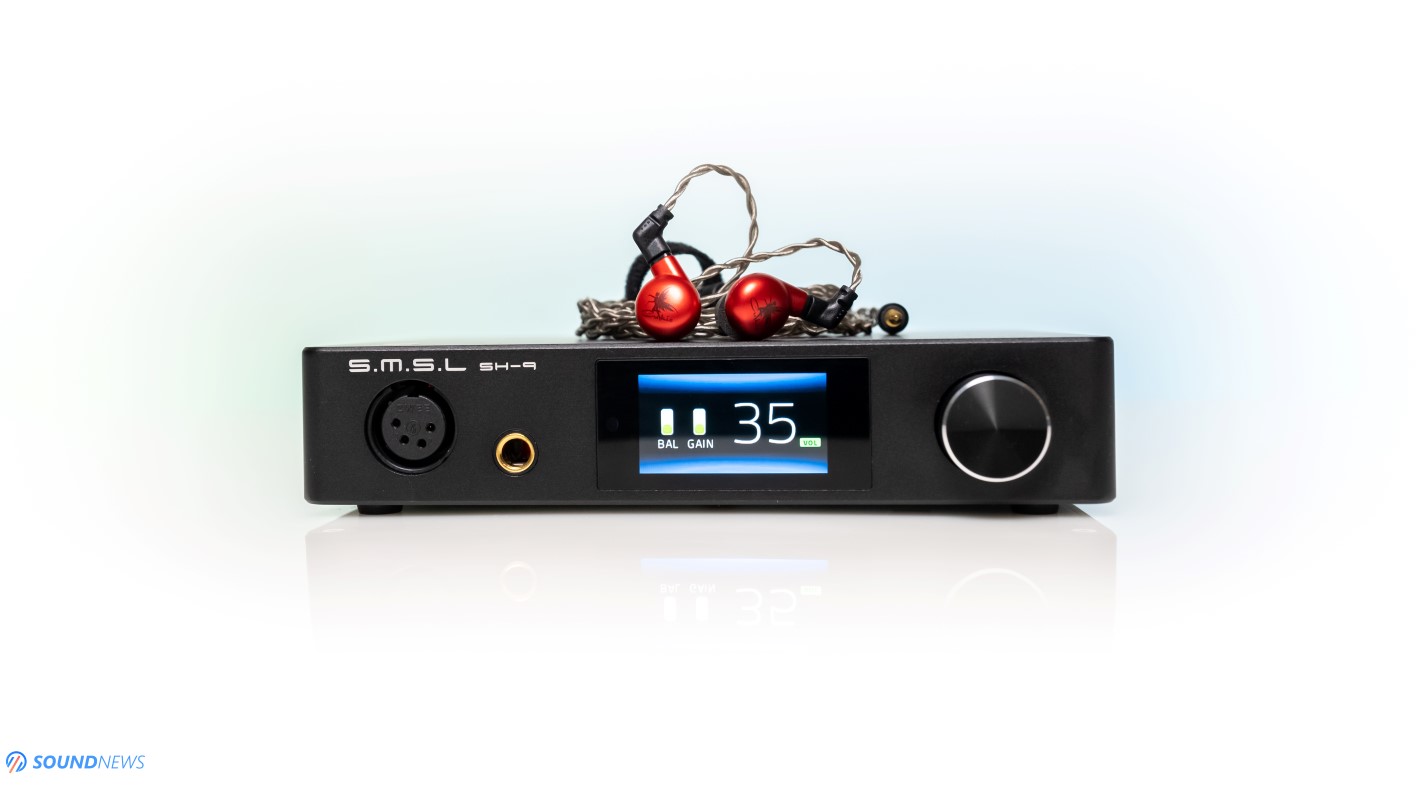
Sound Performance
I. Preliminary Sound Impressions
- Bass hits like a hammer? Check!
- Sub-bass goes into sub-sonics and is easily reaching 20 Hz notes? Double-Check!
- Linear but well-defined midrange, with lush, smooth and guttural voices? Triple Check!
- Enough treble presence in the most sensitive area of our hearing? Quadruple Check!
- A gentle roll off past 10 kHz, that will shoo-away listening fatigue and be in line with the rest of Little Dot audio gear? You bet!
Coming from several linear sounding IEMs that are rounding the sub-bass performance, Kis felt like a sound storm with its bottomless bass performance. I’m very serious in here, its sub-bass delivery is nothing short of spectacular, it goes extremely low, planar-bass low, it’s tight and it is a clean type of bass. I will be measuring them soon, but I expect them reaching subterranean notes in here.
These are not sounding like your typical hybrid IEMs, no my minions, these are sounding like having a full-blown party inside your head with some crazy bass notes hitting your skull one after another. Sub-bass is actually a little overdone in here, it is standing out more often with its authority over the rest of the frequency spectrum. On the plus side, it is a clean type of bass, super defined and free of any distortion. It’s also tight, it’s fast and extremely visceral and hard-kicking type of bass. Yep, I’ve head-banged and yep, I’ve toe-tapped with these on several occasions and mind you, not only with bass heavy music. It is actually not surprising at all experiencing this up-lifting performance and not a straight as a line sonic experience. LittleDot is first and foremost a tube-loving company, they aren’t killing it with linear sounding units, it’s who they are and that is what they stand for. They are more about the musical experience, than about the numbers game and this IEM feels exactly like this.
While it isn’t extremely neutral or super extended in the treble region, it’s damn engaging with modern music and always wants to make you move. It’s almost like a tiny vacuum tube is sitting somewhere inside, pumping natural harmonics and improving the richness and lushness of the music. If you like your treble extremely detailed and overly extended, then you should probably stop right now and check some other reviews of mine. But if you are more about the musical experience and you really despise those nasty bright-trebles, then you are on you right path.
Some friends of mine came yesterday for a listen to those KEF Reference 3 loudspeakers and today I’ve decided using the same Tidal playlist with these. Local folk-rock tunes are always creating super positive vibes for me, by using a plethora of audio instruments, some of which are long forgotten by the sands of time. Via Kis, all that amalgam of sounds felt refreshing, yet full-bodied and meaty all the time. I was prepared to hear a lower presence in the 8 to 10 kHz region, but it was very defined in there, to a point of almost calling them sibilant. The “S” sounds are sometimes bothersome but only in few particular tracks and immediately after the 10 kHz barrier, everything becomes buttery smooth, inoffensive and quite sweet sounding.
Preliminary impressions are good, but I’m hungry for more music so let’s dive deeper into the rabbit hole.
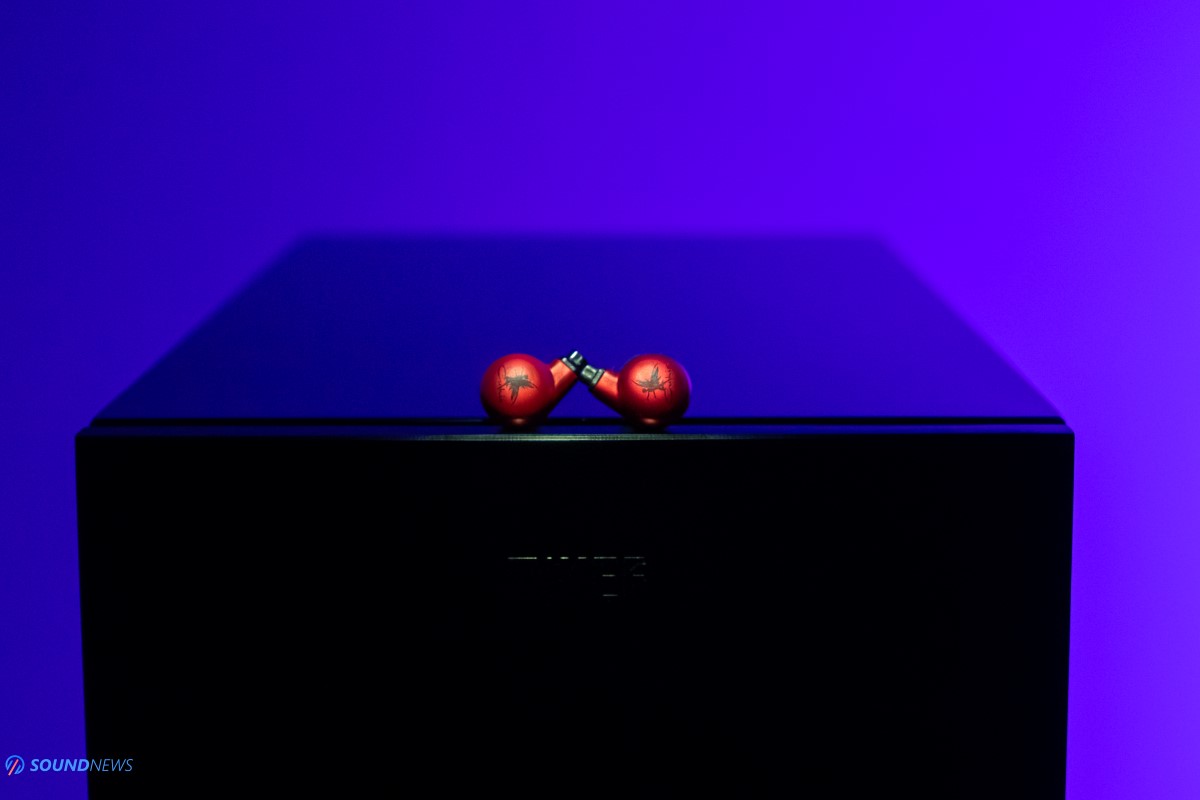
II. Transient Response
Hybrid IEMs aren’t part of the long decays fan-club as most all-dynamic IEM are part of (with several exceptions of course) and this is certainly the case in here too. While the bass might linger a micro-second longer, everything else felt tight, fast sounding and decaying at the right moment. As an added bonus, the weightier and meatier bass delivery is improving tremendously its slam. I even had that sensation of being hit in the chest, even if that didn’t happen at all. Kis will probably not outperform an all-armature based IEM, like FiiO FA9 in terms of sheer speed, but they will surely outperform a lot of IEMs in the $500 to $1000 price bracket when it comes to impact and slam into eardrums. Kis are definitely more about moving huge amounts of air, about the slam that follows, than abound decaying everything in an instant.
I’ve tried them out of a smartphone and to my surprise the sound didn’t lose its magic that much, their tempo remained intact, sound was again fuller and meatier, unleashing some deep reaching bass notes while holding everything together pretty nicely. I will measure their decay very soon, but I expect an instant rise and decay in the midrange and treble and maybe just by a hair a slower bass delivery due to its dynamic driver moving slower compared to its dual balanced armature driver.
While listening to Chocolate Chip Trip by Tool (Tidal / Spotify) which is a dynamics monster track in its entirety. When its drum solo starts shooting fast double-drum kicks left and right, LittleDot’s IEMs were able to keep up with a faster pace, without tangling those drum notes or adding unwanted distortions. Cymbal hits were by a hair stronger in their intensity, compared to what I would call absolute linearity, but those didn’t bother me that much. With faster progressive metal like this, I’m actually liking a crisper mid to upper-treble delivery. Somewhere around 6 to 10 KHz, Kis are extremely potent and present, again adding to the impression of a transparent and fast movement diaphragm.

III. Portable VS Desktop Power
KIS with their 105 dB per 1mW of power are as you can well imagine, very easy to drive. A smartphone or a laptop will easily drive these to ear-shaking levels. On my smartphone, I could never go past 80% of volume even with very high dynamic range tracks like old jazz or classical. They indeed scaled and sounded better out of a nicer Bluetooth dongle like FiiO BTR5 and improved even more out of a portable Hi-Res DAP. The change was coming from a better digital to analog conversion, than from better amplification and that my fellow music lovers is a fact.
I also tried them out of several desktop headphone amplifiers and they sounded pretty much the same as they did on the go. Obviously, when a higher quality DAC will the powering a desktop amplifier, the difference would be bigger. Kis scaled really nicely on a good sounding source and I really like that these are not uber-sensitive to source and amplification noise, like FiiO FA9 are for example. You can easily use them out of some noisier portable or desktop sources. Most desktop headphone amplifiers didn’t increase the noise floor that much and I was able to enjoy them equally well on the go or at home.
Some other In-Ear-Monitors were completely changing with desktop power, especially those carrying multiple balanced armature drivers, but that wasn’t the case in here. If you don’t own a headphone amplifier yet, that is not an issue at all! Plug them directly to your phone and you’re ready to rock!

IV. Soundstage & Depth
There is one unwritten rule that nobody will tell you in Hi-Fi, well…except for me. Be it a loudspeaker or a headphone, if it has a close to perfect bass delivery, easily moving more air down to the lowest octaves – that fact alone will always lead to a bigger sound in the room and to a wider soundscape with headphones. Tell me one bass-oriented IEM or loudspeaker that sounds tiny and claustrophobic? In a stereo setup, air moves the most in the bass region, there is a strong reason people are buying bass traps so that they could control that air and null unwanted vibrations. By IEM standards and to my ears, Kis are quite impressive in here, by offering a slightly bigger than usual soundstage. Of course, being an IEM, with drivers sitting millimeters away from to your ear-drums, I can’t mention about sounds flying meters away from me, that simply didn’t happen. All the sounds were playing outside my head, even passing shoulder level with some nicer live recordings. I’m not very sure if that defined and deep bass helped them or not, but I can’t complain much about their soundstage size on all axes. Depth is well defined and its still one of the strongest point of all IEMs. I could easily hear notes on multiple layers and perceive the distance between myself and every musician in the room. Pin-point imaging is precise, Kis are not muddy sounding IEMs and everything appears as looking through a clean wiped window. Picking sounds in a crowded track is quite easy to do even without closing my eyes.
If you already own a portable source with a 2.5mm or 4.4mm balanced output, I strongly recommend using that output, mostly because of the lower channel crosstalk which would further improve the left to right soundstage. That’s right folks, even small bodied IEMs like these can sound spread-out and quite big, if you feed them the right signal.
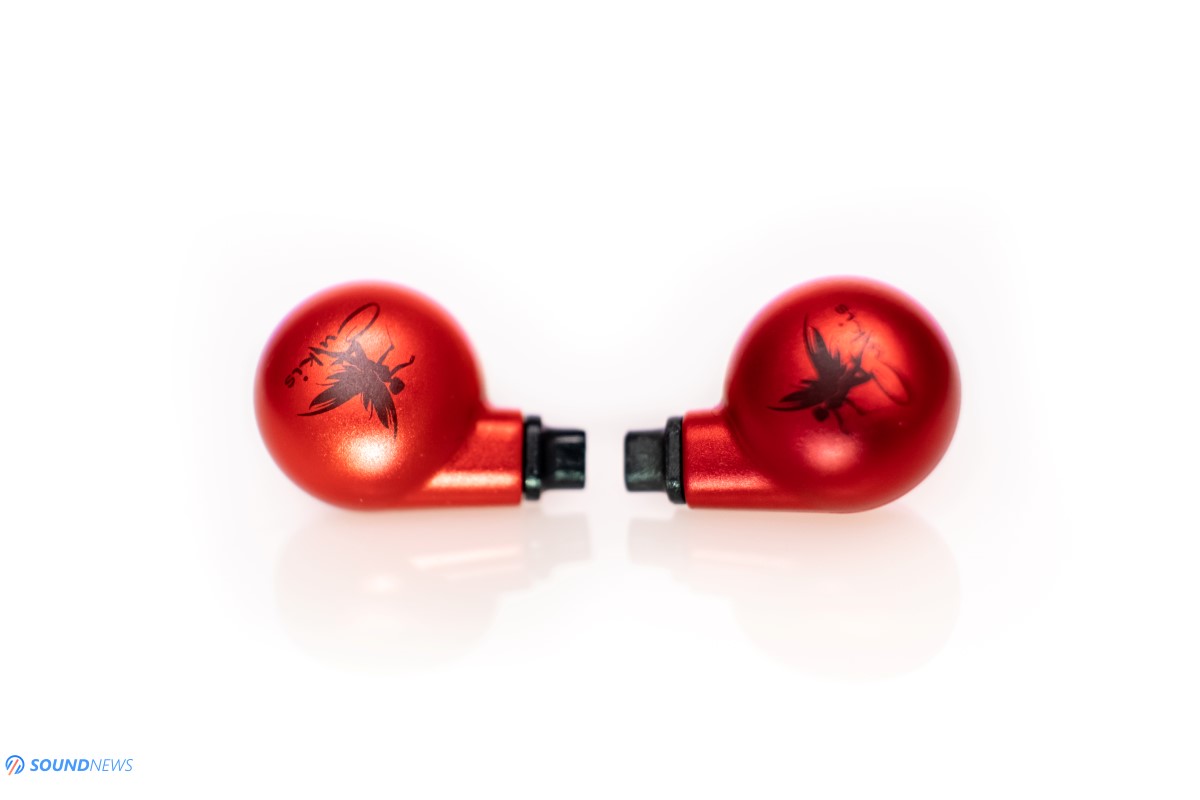
V. Detail Retrieval & Transparency
LittleDot is not specifying exactly who made those balanced armatures, nor who’s the maker of their Amorphous Diamond-Like Carbon dynamic diaphragm. Nonetheless, after listening to them for more than two weeks, I’m inclined to tell that these will hunt the smallest details in your music, except for those past ~12 kHz, where Kis is having a clear roll-off for an easy-going and smooth listening experience. I’ve went though a series of reference recordings ranging from classical, acoustic and jazz and with all of them, Kis appeared as transparent sounding, adding some of its own flavor, gently coloring my music, but still sounding in a detailed manner without adding fog or muddiness in my tunes.
Transparent and well-spread music of Ólafur Arnalds, Bozzio Levin Stevens and Helge Lion Trio sounded crisp, quite defined and precise with just a hair of the upper treble being wiped clean. There were indeed few smallest nuances like tambourines and bells that went out of the picture way too fast for my liking, losing in terms of contour, leading edge and decay.
On the other hand, the most sensitive part of our hearing (6 to 10 kHz) was extra crisp, defined and very well-made. Sometimes it could appear as too good to a point of sounding a bit harsh and sibilant for a micro-second, but only in treble heavy tracks. Its treble is such a shape-shifter, because its lower and mid-treble are extremely well made, adding a sense of air and detail in every track. Yet, past upper treble, it is losing definition, body and substance. If that’s a con or not, it really depends on your age and on your tastes. I personally hear up to 17.5 kHz with my left ear and up to 17.2 kHz with my right ear, according to my latest audiogram made this year. For me, it’s a little bothersome losing detail in the upper part of the spectrum, but that can also work as a big plus if you really dislike nasty ringing and harshness past that frequency region.
I will state that in terms of sheer detail retrieval, Kis outperformed the $1099 Meze Rai Penta and it is more or less on the same level with the $599 FiiO FA9, just so you could get a general idea about their detail retrieval and transparency levels.

VI. Frequency Response
LittleDot’s flagship IEMs can be summarized as being neutral in the midrange, with an elevated bass and mid-treble performance, followed by a roll-off in the upper treble. Wait a second…Does this ring a bell to you? Check this Harman target curve graph.
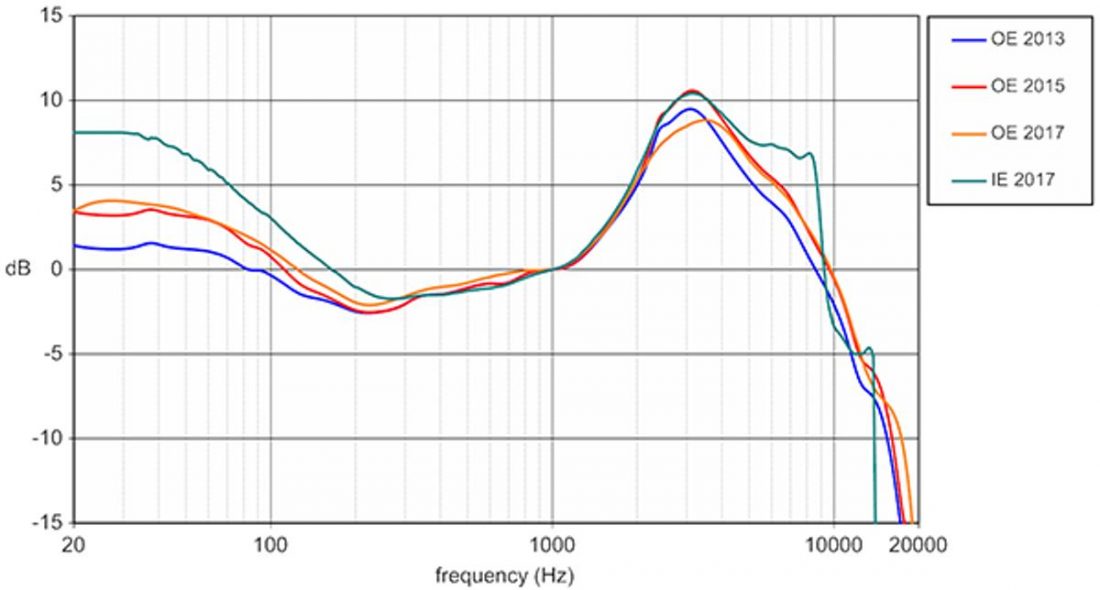
How about now? That’s right folks, LittleDot is trying to mimic the latest IE 2017 target curve that is focused on delivering an enjoyable listening experience long term, above anything else.
A. Bass
Sub-bass starts really strong in here, I’m going as far and say that this is the deepest sub-bass I’ve experienced with IEMs. If you think your FiiO FH7 are powerful in the bass…think twice. KIS are not really bass canons, but they will surely impress a bass addict. Not only it is elevated by a few decibels, but it is also a clean and super tight type of bass. It isn’t spilling over the midrange and always has this feeling of a breathing and pulsating bass type. It is a pure joy listening to any kind of modern music and things like R&B, Rap and electronica shined brighter with these. Bass went down, it hit like a thunder and then it vanished like nothing happened. I personally like its fast and detailed nature, bass-layers can’t hide with an IEM like this.
On the flip-side, you always hear it first and it will make its appearance even in music your never expect it. There is plenty of it even with classical and jazz music, it is almost distracting at times. Amazing bass delivery, that sometimes sits exactly at the edge of being too much or being linear.
B. Midrange
You probably know my tastes by now, my name is Sandu and I’m a midrange addict and I’m holding this part, above any other frequency. This is the only frequency range that didn’t felt elevated at all, it wasn’t going down either and I felt it somewhat linear and straight, without any pot-holes whatsoever in that region. At first it might sound like a V-shaped IEM and to some degree that is true, but instead of dropping down frequencies, LittleDot decided to elevate some of them and that was a good decision, because no matter how strong the bass is, midrange will always remain linear and present in right doses. It has a decent amount of warmth and definition; voices always sounded clear and had a right natural pitch. I’m not experiencing metallic voices like all-armature IEMs tend to sound like, midrange is more life-like in here. I can call it smooth and easy going, but in the same time its not very defined, meaty or super present. It is linear and straight and that is all you need to know.
C. Treble
This is quite an interesting part as the lower treble starts slowly its ascent until it reaches mid and upper treble, where it was felt very outlined and present in all the songs. The most sensitive part of our hearing is elevated by a few dB and gives a feeling of a breathing sound, of sharper details and of a higher transparency than usual. Most higher notes like cymbal crashes and tambourines are happening in this region and those felt very visceral, almost brutal at times, very clear sounding and always having a defined leading edge. Again, modern music with a lot of drums, sounded very engaging actually, I was toe-tapping all this time and I enjoyed every minute of my electronica or folk-rock. The S sounds are sometimes bothersome and piercing, but only for a very short period and only in some particular treble intensive tracks.
Past 10 kHz and it starts descending and going past 14 kHz it is simply nose-diving, hardly reaching 20 kHz region. That’s right folks, Kis is rounding the top octave, everything that happens in that region will be less piercing and painful.
Overall, they achieved their goals, its frequency response looks very much like the Harman target curve and it sounds absolutely phenomenal with fast energetic music.

VII. Measurements
After offering my full-blown subjective opinion, it is time to put them under a magnifying glass and see how they perform. When it comes to measurements, my best friend is still the Benchmark HPA4 as it is as linear as headphone amplifiers could go and I used both the Matrix Element X and the Audiobyte HydraVox as the main DACs for the job. The measurement rig was the MiniDSP EARS calibrated with IDF (IEM Diffuse Field) compensation files. Do note that MiniDSP EARS is not following any IEC standards, meaning that my readings can’t be used as reference measurements, I’m doing them just to get a general idea about their sound signature.
I’ve measured them only by using the memory foam ear-tips, as all other ear-tips would not offer a perfect seal, completely destroying the bass performance in the process. I’ve measured them more than 15 times, as finding a perfect fit and a complete seal was quite a challenge.

Here are their RAW measurements and as you can see, their driver matching is good up to 3 kHz where a small deviation of few db can be observed. I have re-inserted them several times in the test rig and I’ve got exactly the same set of measurements.

Applying a 1/12 smoothing not a lot of things are changing. You can clearly see their legendary sub-bass performance that is elevated by almost 10 dB from the reference signal of 84 dB. Midrange is absolutely phenomenal and it looks like a straight line without zero deviations. Treble is uneven and definitely follows the Harman curve. As you can see, it is super defined between 4 and 10 kHz and then it starts slowly and smoothly declining, gently rolling-off the top octave and everything that happens in that region.

Their Total Harmonic Distortion (THD) reading is good, its dynamic driver barely touches that 1% of THD while feeding a stronger 84dB signal, quite impressive. Upper treble touches that 1% of distortion, but it is not that worrisome if you ask me.

Its spectral decay is very good and as you can see, bass isn’t lingering that much and this is exactly what I’ve heard with them too. Somewhere past 12 kHz, treble starts clipping a bit, most probably the balanced armature struggles rendering those notes.
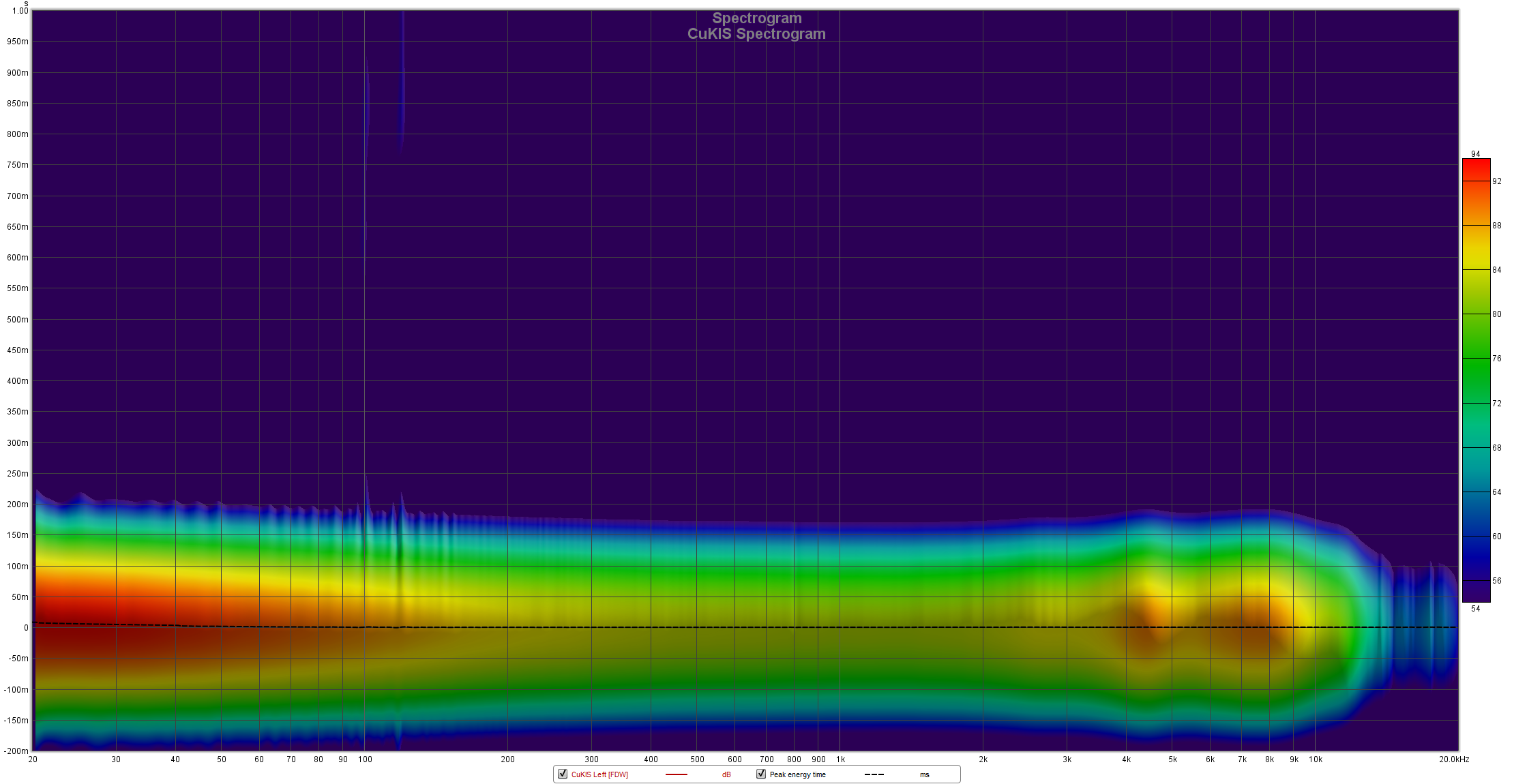
Spectrogram will be showing the hot zones and as you can see, its bass and a small portion of the treble will be drawing the full attention of the listener. Waterfall is great, it’s smooth, without any weird driver movements, meaning that Kis has minimal driver ringing across all FR range.

VIII. A Comparison
LittleDot CuKis ($729) VS FiiO FA9 ($599)
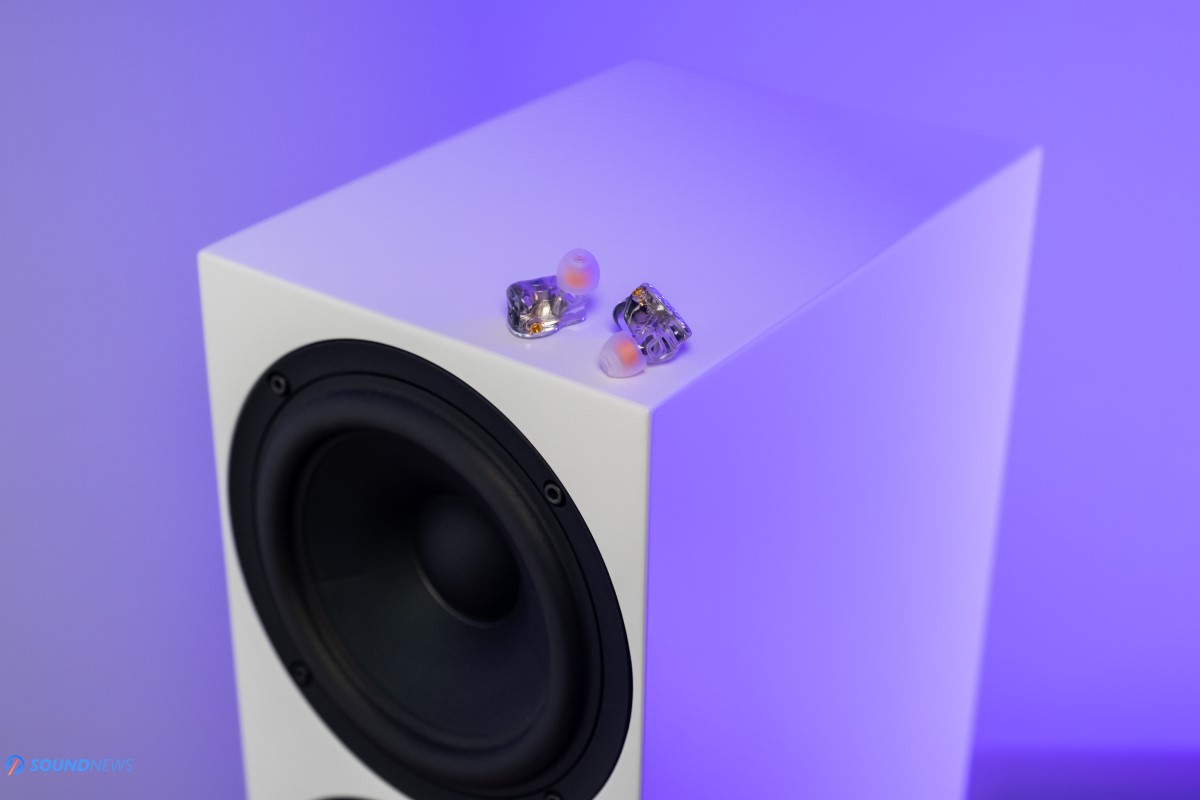
I will skip their looks, build quality, accessories and so on and will focus only on their sound quality.
FA9 is an all armature-based IEM with an interesting 3 switch design that works as a small hardware EQ that will alter its bass, treble and then its sensitivity, which is pretty neat if you ask me. However, all those switches are set and forget, most likely you’ll be using a single combination you like them most. I used Bass Boost On and didn’t touch the rest of the switches.
In terms of sound quality, both have a very different tonality. FA9 is more about that warm and defined midrange and then about the top octave. KIS is in a completely opposite camp with a linear midrange, followed by a very strong bass delivery and by a good rendition of the low to mid treble area. With modern tracks, KIS is by a whole lot more engaging and way harder slamming. Its bass performance is nothing short of outstanding and sometimes overdone a little bit. FA9 on the other hand, even with its bass boost enabled is lacking energy down low and is rolling off the sub-treble by a few dB. FA9 will impress you more with its warm midrange, natural tonality and not so much with its bass performance or with its lower treble delivery, where it is a bit thinner and less impressive. No matter the switch combination, FA9 are brighter sounding and less engaging in the long run, but will unveil an additional layer of information past 10 kHz, a thing that KIS can’t really do.
In terms of transparency and overall cleanness, I find them both being on the same level, always sounding detailed and airy most of the time. However, in terms of soundstage, it is a slightly different story. I’m not sure if its bass performance is adding a helping hand, but Kis is pushing the sounds farther away by a few notches and appears as wider sounding to me.
Sincerely, I find them both unique and interesting sounding, they complement each other’s faults like Ying and Yang. Which one will be for you, will solely depend on your musical preference and taste.

Conclusion
I have tried a healthy number of IEMs in the last few years, but neither of them strictly followed that Harman curve like these did. KIS feels like a very pleasant change of pace by sounding unlike anything I’ve tried before it. Not only it is super engaging and fiery sounding all the time, it also measured very well in most key areas. I was surprised by its bass delivery the most, as it didn’t sound like small IEM bass, but more like hard slamming planar-bass…if you know what I mean. I particularly liked that power is not mandatory with these and even a smart device was able to drive them to ear-bleeding levels. A nicer sounding digital source did make a positive change and I would personally get a nice Bluetooth dongle like FiiO BTR5 or Shanling UP4 and be done with it. A portable DAP should also unlock their potential and if you want absolutely the best out of them, use that 2.5 or 4.4mm adapter and a balanced connection.
LittleDot Cu Kis will cost you $729 right now, but I do get a chilly feeling they might be discounted tomorrow, that happens to be the infamous Black Friday. You can get them directly from LittleDot’s web-store right here.
PROS:
- A wide selection of ear-tips
- Decent build quality
- Covers all your headphone connections with specialized adapters (3.5 mm SE, 3.5 mm BAL, 2.5mm BAL and 4.4mm BAL)
- Very high comfort levels
- Lightweight and very small
- The best sub-bass performance I’ve experience with IEMs
- Good measurements across the board
- Wide soundstage for an IEM
- Good pin-point location of all the notes, 3D sounding
- Good detail retrieval, quite transparent sounding too
- Follows the Harman IE 2017 curve
- Very easy to drive
CONS:
- Driver matching was not perfect
- Roll-off in the top octave (could be a major plus for some)
- Contents of the Gift box should be included in the product packaging
ASSOCIATED EQUIPMENT:
- DACs: Audiobyte HydraVox + HydraZap, Matrix Audio Element X, Burson Conductor 3X Performance, Flux Lab Acoustics FCN-10
- Headphone Amps: Benchmark HPA4, SparkoS Labs Aries, Flux Lab Acoustics FCN-10, SMSL SH-9
- IEMs: LittleDot Cu KIS, Meze RAI Penta, RAI Solo, FiiO FA9, FH7, FH3, Kinera Freya
- Portable headphones: Sennheiser Momentum 2, Meze 99 Classics
- Full-sized headphones: Audeze LCD-4, Erzetich Phobos, Erzetich Mania, Hifiman Susvara, Hifiman Arya, Quad ERA-1, Fostex TH909, Kennerton Wodan, Kennerton Magni, Kennerton Gjallarhorn, Ollo S4X Reference
- Preamp: Benchmark HPA4
- Power Amps: KECES S300, Kinki Studio EX-M7
- Loudspeakers: KEF Reference 3, Buchardt S400
- Interconnects: QED Reference (x2), Aune AL3
- Speaker cables: Kimber PR8, Audioquest Type4
- Power Cables: Isotek EVO3 Premier (x3)
- Balanced Isolation Power Conditioners: PLiXiR Elite BAC400







